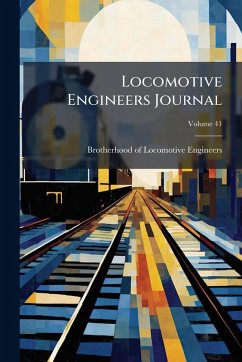Dive into the historical archives with Volume 41 of the "Locomotive Engineers Journal," a publication by the Brotherhood of Locomotive Engineers (U.S.). This volume offers a detailed look into the professional lives, challenges, and perspectives of locomotive engineers during a pivotal period in railroad history. Providing insights into the technological advancements, labor conditions, and socio-political issues affecting railroad workers, this journal serves as a primary source for understanding the complexities of the railroad industry and its impact on American society. Researchers, historians, and anyone interested in railroad engineering, labor history, or American industrial development will find valuable information within these pages. The journal captures the voices and experiences of those who played a crucial role in shaping the nation's transportation infrastructure, making it an essential resource for academic study and historical preservation. This work has been selected by scholars as being culturally important, and is part of the knowledge base of civilization as we know it. This work was reproduced from the original artifact, and remains as true to the original work as possible. Therefore, you will see the original copyright references, library stamps (as most of these works have been housed in our most important libraries around the world), and other notations in the work. This work is in the public domain in the United States of America, and possibly other nations. Within the United States, you may freely copy and distribute this work, as no entity (individual or corporate) has a copyright on the body of the work. As a reproduction of a historical artifact, this work may contain missing or blurred pages, poor pictures, errant marks, etc. Scholars believe, and we concur, that this work is important enough to be preserved, reproduced, and made generally available to the public. We appreciate your support of the preservation process, and thank you for being an important part of keeping this knowledge alive and relevant.
Bitte wählen Sie Ihr Anliegen aus.
Rechnungen
Retourenschein anfordern
Bestellstatus
Storno

